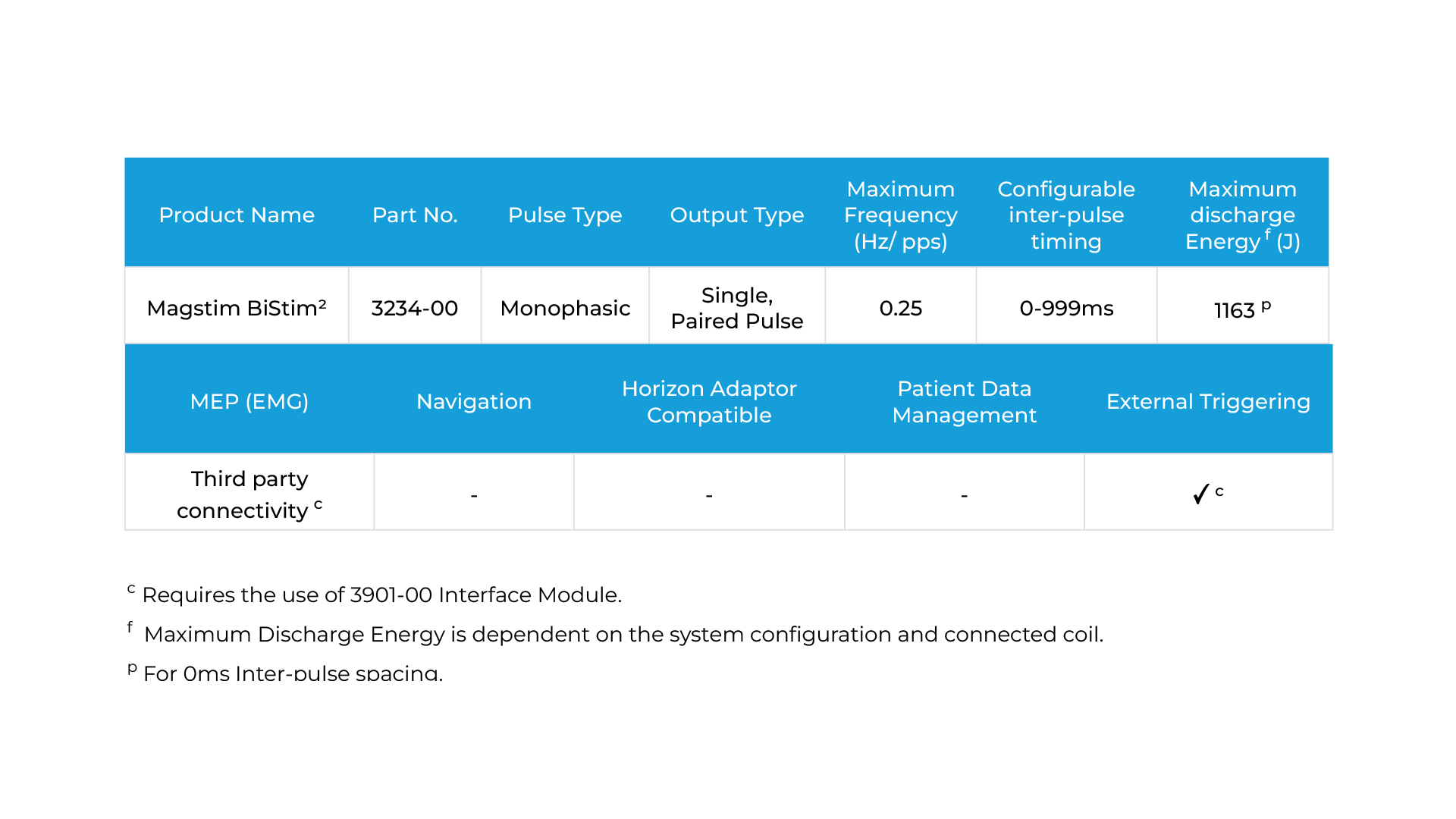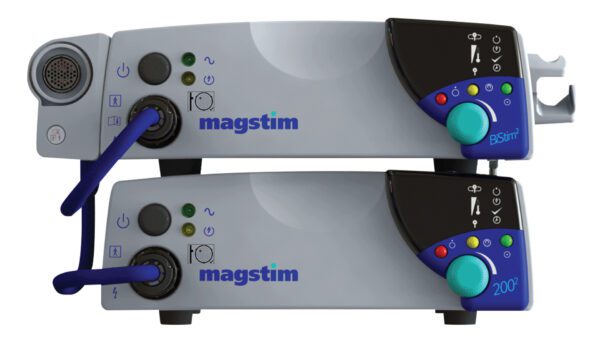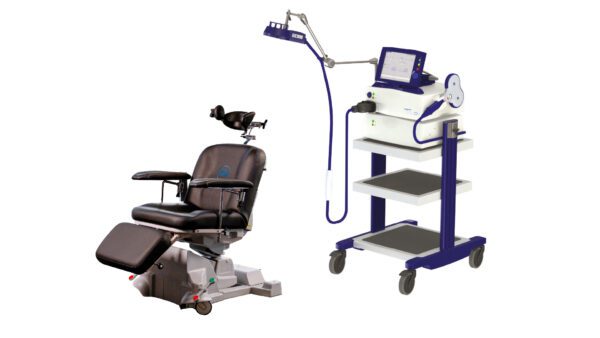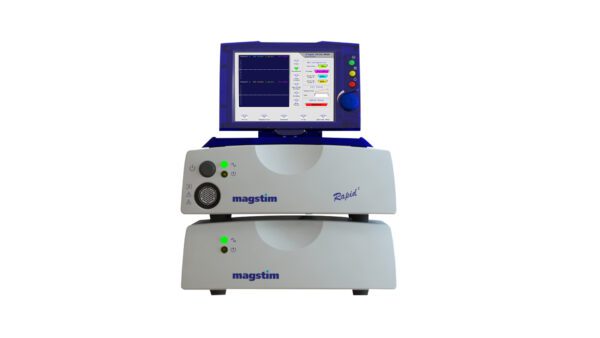Magstim BiStim²
The Magstim BiStim² combines two 200² units through a connecting module, so that paired pulses can be delivered through a single coil.
Setting the stimulator outputs independently allows the user to deliver precise sub and supra-threshold conditioning.
The BiStim² is designed to be compatible with a wide range of Magstim coils (see compatibility table) and enables two coils to be connected for dual-site stimulation. Single and dual coil set-ups can be easily integrated with external triggering and recording devices using a Magstim Interface Module (see the Accessories & Consumables section).
Ideal for neural inhibition/facilitation investigations, and modulation of cortico-cortical connectivity. Suitable for stimulating both the central and peripheral nervous systems.
Mains voltage variants:
115/230V (configurable) or 100V (Japan)
Already have a 3231-00 M200² Stimulator and want to upgrade to BiStim²?
Do so with a 3236-00 upgrade package (voltage variants apply).
c Requires the use of 3901-00 Interface Module.
f Maximum Discharge Energy is dependent on the system configuration and connected coil.
p For 0ms Inter-pulse spacing.
Contact Us
Contact us











